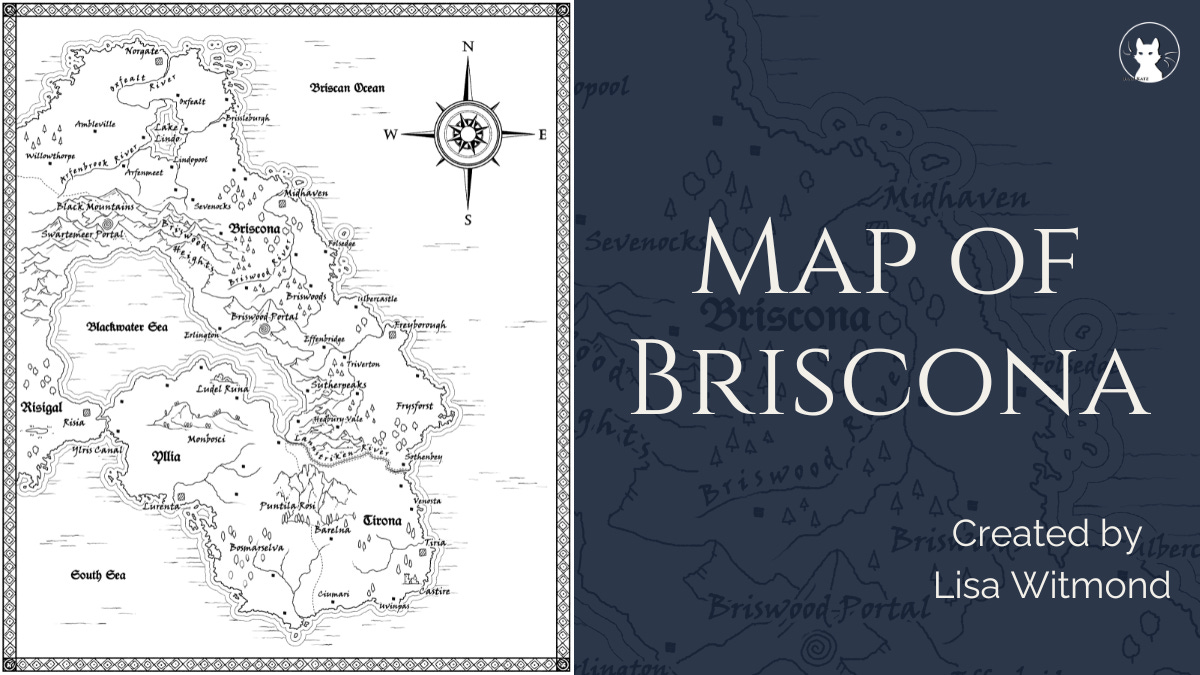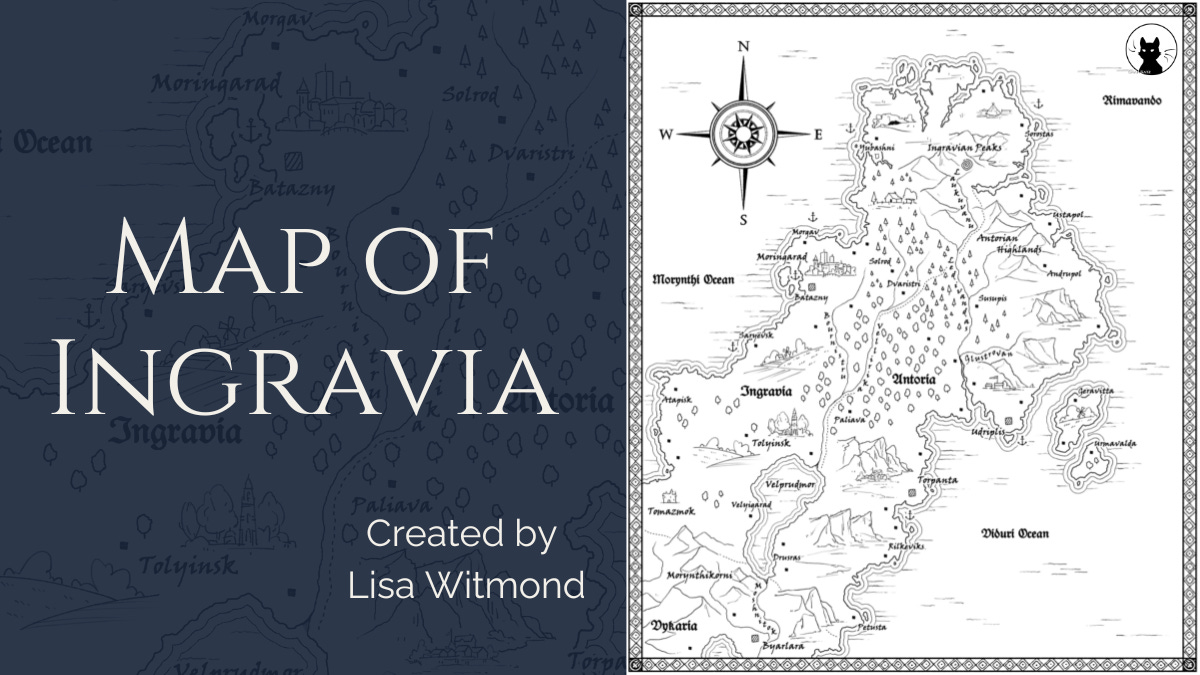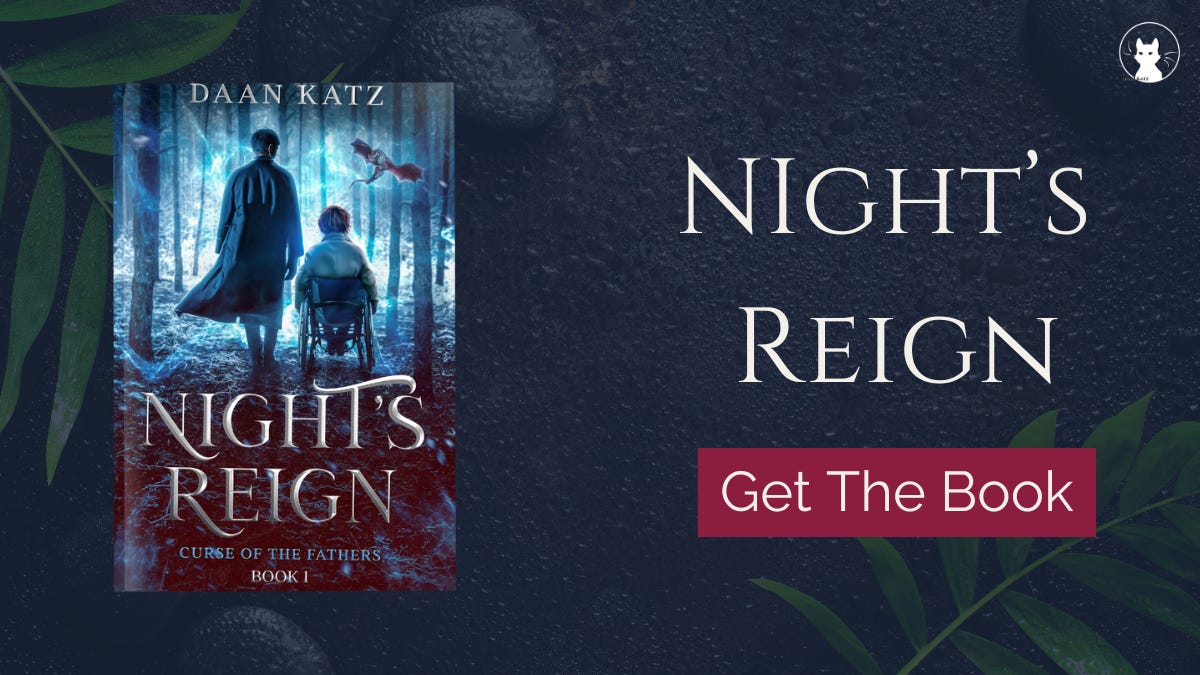Discovering Sor - Part I: Geography
‘Overlooking the bluest sea I’d ever seen, with low palms lining the taxiways, and perfectly manicured lawns in between, Sageharbour International Drakenport looked enchanting. The beautifully stylised, dragon-like aeroplanes waiting for departure, only added to the magic.’
From: Death and the Maiden
Sor is one of the seven interconnected worlds I created for my fantasy universe, The All. Unlike many fantasy worlds, Sor is a technologically advanced world, just like ours. But contrary to our world, Sor has magic and dragons.
What makes Sor different from our world? Sor breathes the same nostalgic atmosphere you’ll find in most traditional fantasies. Though I am not entirely sure how that happened, it might have something to do with the gods who—on their own terms—communicate directly with their people.
In this series, I’ll take you on a journey of discovery through my world Sor, starting with an overview of its geography and environmental features.
The World at a Glance
The planet Sor once had only one continent, covering about 40% of its surface area, drifting in a vast ocean. Over time, however, this dragon-shaped landmass split up into several continents.
If that sounds familiar, that’s because it is. To keep things simple and realistic, I opted to create a world similar to our own—in mass, evolutionary history, place within its solar system and all these other factors that make a planet suitable for human habitation.
Or, in Star Trek terminology: Sor is an M class (or Minshara-class) planet. These planets have several important features in common.
Age: 3 to 10 billion years
Diameter: 10,000 to 15,000 kilometres
Location: in the ecozone of a star’s solar system
Surface: a thin tectonic layer over a molten mantle, often with active volcanoes
Water: abundant, and necessary for life
Atmosphere: a mix of oxygen, nitrogen, and some trace gases
Flora and fauna: extensive, with sentient species usually present
Sor currently has five continents: The Briscan Continent, the Dalanthian Continent, the Ark-Morynthi Continent, and two as-yet unnamed continents.
‘Why unnamed?’ you might ask.
The answer is simple—and probably a little disappointing. There’s no grand secret or hidden lore. At least, not that I know of. The truth is, I am a discovery writer (AKA a pantser), which means I develop my worlds as I write.
Since I’ve never sent any of my characters to these continents yet, I know precious little about them. And I’m happy to keep it that way until my characters have reason to explore these continents.
However, I can tell you plenty about the places where my stories take place.
Destinations Worth Visiting
Briscona
‘These were the legendary Briswoods, with their majestic trees, some of which were said to be older than the world itself. People also claimed there was magic in this forest.’
From: Night’s Reign
With its temperate maritime climate, Briscona is a friendly country to live in. Rainfall is more common than clear blue skies, but temperatures remain mild year-round. Winters bring the occasional snowfall and frost, while summers are pleasantly warm. Extreme temperatures are rare.
While Briscona is relatively flat, a long, rugged mountain range forms its eastern border—an inhospitable natural barrier that separates the country from the mainland, across the Blackwater Sea.
In the shelter of these mountains lies a pastoral country with lush green farmland and sprawling deciduous forests as old as the world itself—or so legend would have us believe. These ancient woods are home to the cunning prowlfox, the mighty mountain misk, and the shy two-tailed ikorn.
The landscape is dotted with charming towns and villages with names that breathe an Old English charm: The Barlows, Ambleville, Midhaven, Folsedge, Triverton, Hadbury Vale, and countless others that add to Briscona’s lasting allure.
Ingravia
‘As we travelled farther north, the landscape became more and more inhospitable. The air grew colder and the ferocity of the winds that tried to drag our vehicle off the ever-narrowing roads intensified.’
From: Dies Iræ: Revenge of a Reject
Ingravia is rumoured to be a cold, unforgiving northern country, with a population that mirrors its harsh geography and climate. But that’s only part of the story. In reality, Ingravia is a land of contrasts—its icy, windswept north a world apart from the lush, humid subtropics of the south.
That said, Ingravia is infamous for its harsh culture, with crime its prime profession. Not that the crime lords agree with such a narrow view of their occupation. If you were to ask them, they would insist that they are honourable business people.
The jagged Ingravian Peaks in the north, home to the nearly extinct dragons, are rarely explored by humans—though not for fear of the dragons. It’s because of the everfrost that can claim one’s limbs in mere moments, and the treacherous terrain where a single misstep can be fatal.
Dragons, however, are not the only animals to inhabit these regions. Anyone brave—or reckless—enough to venture into the Ingravian Peaks risks crossing paths with the fierce manewolf, the fearsome tusker, the ghostly grizzlehound, and other dangerous creatures of the wild.
Magic is perhaps Ingravia’s biggest taboo. Anyone caught practicing the arcane arts will be sentenced to death, and even believing in it is a heresy, punishable by Rejection—a fate commonly regarded as worse than death.
And yet, magic fuels the Ingravian economy as much as the Merchant Lords’ honestly embezzled red gold—a carefully guarded secret known only to a handful of people aside from those who provide these magical means.
Ebaru
‘I was born in the capital city of Ebaru (...) where the people wear silken robes, the streets are paved with gold, and the sun radiates brilliantly from the white marble palace walls and their golden-roofed towers.’
From: Nights’ Reign
In lush, tropical Ebaru, sun-soaked cities nestle amongst a vibrant green jungle. The air thrums with the heady perfume of exotic forest flowers and the symphony of unseen wildlife.
The peaks of the Cahltaru Tops, just north of Ebaru City, are blanketed in a layer of snow that shines blindingly in the sunlight. Beyond the golden beaches that curve like ribbons along the coastline, the azure ocean stretches as far as the eye reaches.
Yet, for all its lustre, this seemingly rich country has suffered profound tragedies.
For centuries, its inhabitants, rich and poor alike, have suffered under the effects of an ancient curse. Even the royal family—especially the royal family—has not been spared. It’s up to autistic priest Niels Bosch and his wheelchair-dependent cantor Beldenka Nadinov to lift that curse.
You can read all about their hazardous quest in my novel Night’s Reign. Their journey takes them from their sleepy parish in Briscona to the Royal Palace in Ebaru, where Niels needs to confront the mad king. But the enemy is watching, and preying on their lives.
Senkerland
‘Funereal trees cast long shadows on the scattered patches of half-melted snow. Here and there, shy new growth peered out from between the dead matter that lay strewn across the forest floor. A lone mouse scrambled through the jumble of pine cones and needles on that drab mossy carpet.’
From: Night’s Reign
Senkerland is the northernmost country on the Briscan Continent. The harsh, wild terrain, with its forbidding mountains, dense pine forests, and perpetually frozen harbours—where treacherous ice floes have claimed many a sailor’s life—has led most of the original inhabitants to move to warmer regions further south.
According to legend, a handful of Ingravian dragons have sought refuge in the untamed wilderness of the Senkeberghe to avoid falling prey to the dragon hunters. However, no person alive has ever actually spotted a dragon, and not for lack of trying.
The country is sparsely populated, with only a scattering of towns—most of them in the more temperate south. Due to its declining population, the government has outlawed all forms of contraception, which in turn has prompted even more people to seek refuge elsewhere.
Still, a surprising number of people—even of the younger generation—would rather die than leave their beloved homeland. They pride themselves on their hardiness, and may even secretly look down on the ‘soft citizens’ of warmer nations.
Stay in the Loop
I hope you enjoyed this journey across Sor. In the next part of this series, I’ll tell you all about the cultures of Sor’s varied population.
If you are looking forward to it as eagerly as I am, make sure to hit that subscribe button so you won’t miss out on the fun.








